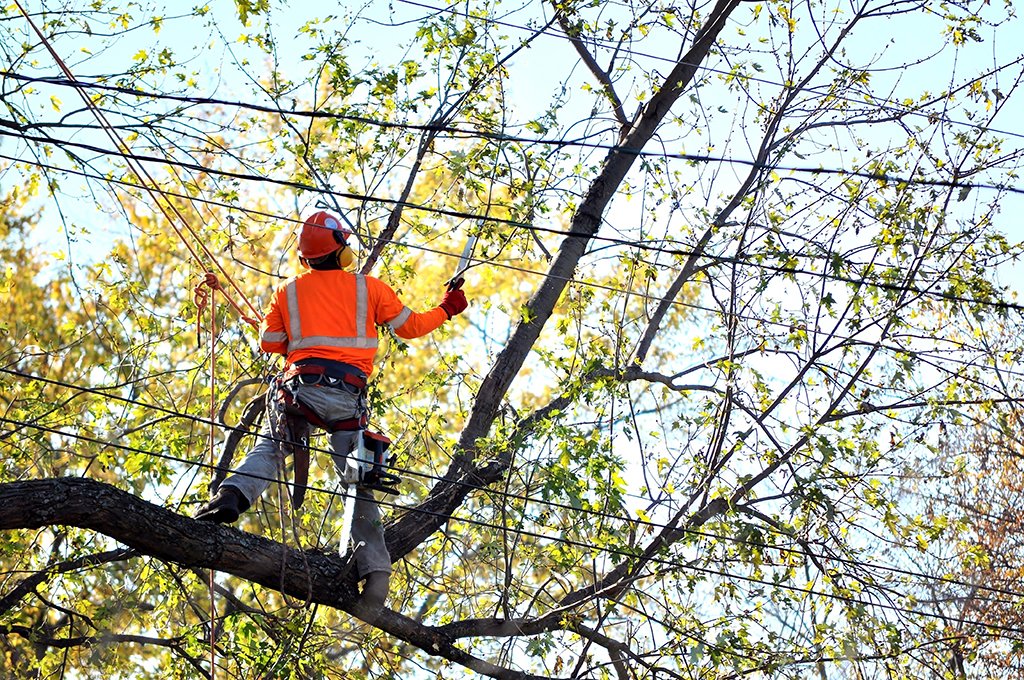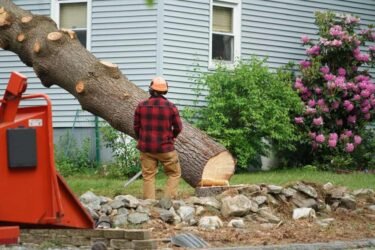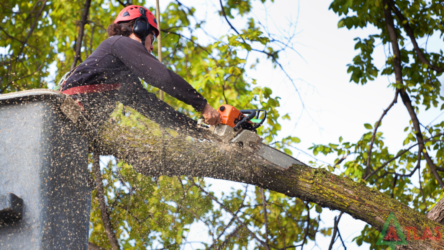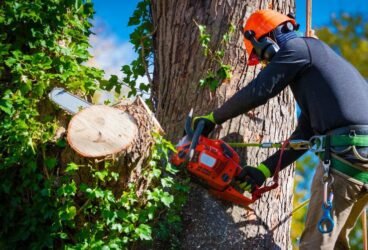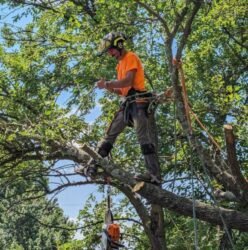Protect Your Trees and Property—Know When It’s Time for Expert Tree Trimming! Trees add beauty, shade, and value to any property but can become hazardous without proper care. Routine tree trimming in Springfield, MO, is essential to prevent safety risks, enhance tree health, and maintain the overall aesthetics of your landscape.
Knowing when to trim your trees can be challenging, especially if the signs aren’t immediately obvious. This guide will help you recognize key indicators that it’s time to schedule professional tree trimming.
7 Essential Signs You Need Tree Trimming Services in Springfield, MO!

Overgrown branches, lifeless limbs, storm damage, pest infestations, structural risks, excessive shedding, and blocked sunlight—these seven signs indicate it’s time for professional tree trimming in Springfield, MO. Let’s understand each issue in detail.
1. Overgrown or Unbalanced Branches
Why It Matters: Overgrown branches can weaken the tree, create structural imbalances, or pose risks during storms.
Signs to Look For:
- Branches extending too close to roofs, windows, or power lines.
- Trees are leaning due to uneven growth.
- Low-hanging limbs obstructing driveways, sidewalks, or pathways.
What to Do: Regular trimming helps maintain a balanced tree structure and prevents damage to surrounding structures.
2. Dead, Diseased, or Weak Branches
Why It Matters: Dead or diseased branches can spread infections, attract pests, or fall unexpectedly, posing safety risks.
Signs to Look For:
- Branches with no leaves during the growing season.
- Fungus, mold, or rot on limbs.
- Cracks or peeling bark indicating decay.
What to Do: Pruning diseased or dead branches prevents further spread and enhances tree longevity.
3. Trees Interfering with Power Lines or Structures
Why It Matters: Overgrown trees can cause electrical hazards, block visibility, and damage nearby buildings.
Signs to Look For:
- Branches touching or hanging over power lines.
- Limbs scraping against roofs or siding.
- Tree roots cracking driveways, sidewalks, or foundations.
What to Do: Tree trimming helps manage tree growth and prevents costly property damage. If trees are dangerously close to power lines, you must contact professional services immediately.
4. Excessive Leaf or Bark Shedding
Why It Matters: While seasonal shedding is natural, excessive loss of leaves or bark could signal disease or environmental stress.
Signs to Look For:
- Heavy leaf drops outside of autumn.
- Bark splitting, peeling, or falling off.
- Sparse canopy or slow tree growth.
What to Do: Regular trimming promotes tree health by improving air circulation and sunlight exposure.
5. Blocking Sunlight or Scenic Views
Why It Matters: Dense foliage can reduce natural light, limit air circulation, and obstruct scenic views.
Signs to Look For:
- Overgrown branches shading solar panels or garden areas.
- Thick tree canopies limiting airflow.
- Trees blocking windows or scenic landscapes.
What to Do: Selective trimming enhances light exposure and keeps trees from overpowering the space.
6. Storm Damage & Broken Limbs
Why It Matters: Severe weather can cause tree limbs to snap or weaken, making them dangerous.
Signs to Look For:
- Splintered or hanging branches after high winds.
- Trees leaning or uprooted after heavy rains.
- Cracked limbs at risk of falling.
What to Do: Inspect trees after storms and remove broken limbs to prevent accidents. Complete tree removal may be necessary in cases of severe damage.
7. Pest Infestations
Why It Matters: Insects and pests can damage trees from the inside, weakening them over time.
Signs to Look For:
- Small holes in branches or the trunk.
- Sawdust-like residue at the base of the tree.
- Unusual insect activity, such as termites or beetles.
What to Do: Pruning infested areas can help prevent the spread of pests and protect surrounding vegetation.
Comparison Table: When to Trim vs. When to Remove!
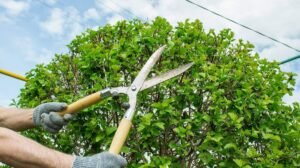
| Situation | Trim the Tree | Remove the Tree |
|---|---|---|
| Overgrown branches | Yes | No |
| Dead or diseased limbs | Yes | No |
| Leaning after a storm | No | Yes |
| Interfering with power lines | Yes | No |
| Pest infestation | Yes | No |
| Hollow or weak trunk | No | Yes |
Why Choose T & F Tree Service?

Regarding professional Springfield tree services, hiring an experienced team ensures your trees receive the best care possible. T & F Tree Service specializes in:
- Expert tree trimming in Springfield, MO, to enhance tree health and appearance.
- Safe tree removal services in Springfield for hazardous or damaged trees.
- Reliable stump removal in Springfield, MO, for a clean and polished landscape.
- Emergency tree services in Springfield for immediate storm damage assistance.
With trained arborists and industry-grade equipment, contact T & F Tree Service; it delivers high-quality solutions to keep your trees thriving.
Conclusion
Recognizing the signs that your trees need trimming is essential for maintaining safety, aesthetics, and tree health. Whether you notice overgrown branches, dead limbs, or structural issues, regular maintenance can prevent more significant problems in the future.
Professional tree trimming ensures trees grow strong while minimizing risks to property and people. If you observe any warning signs, consider contacting a tree service in Springfield to assess and address the issue promptly.

